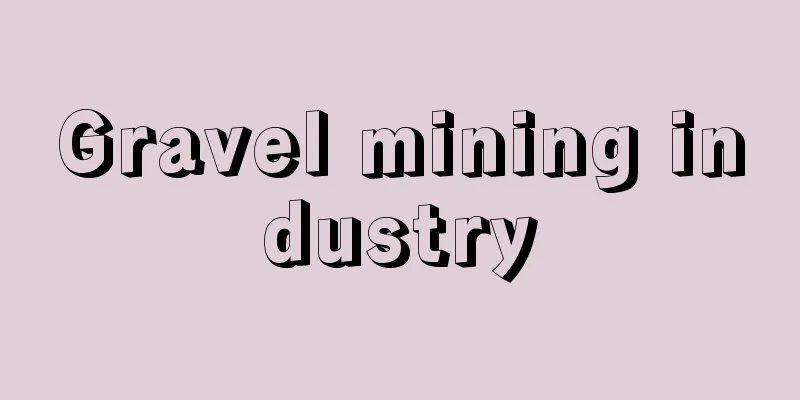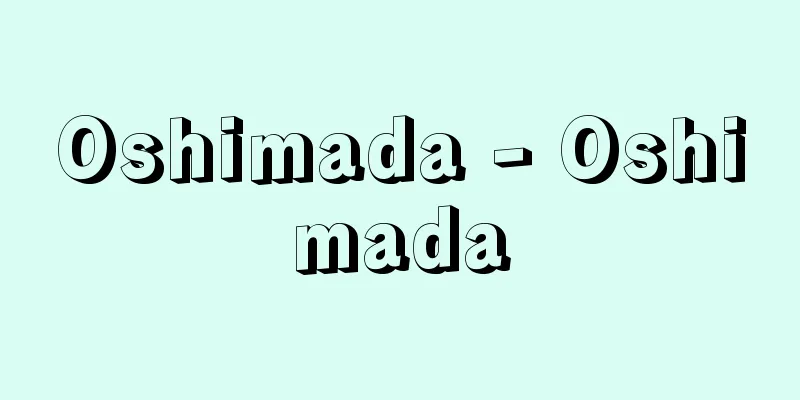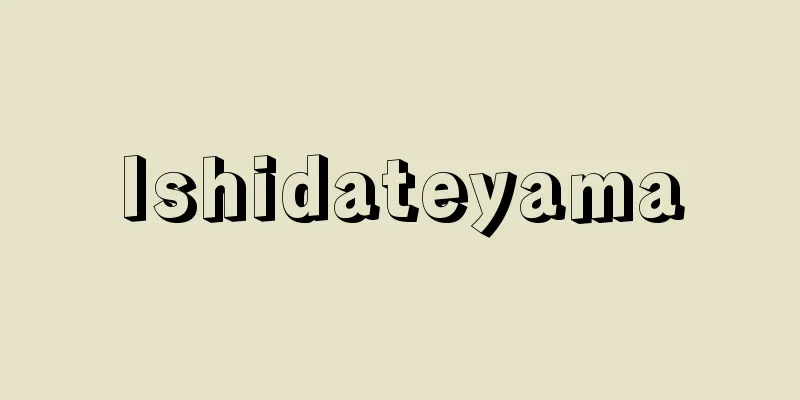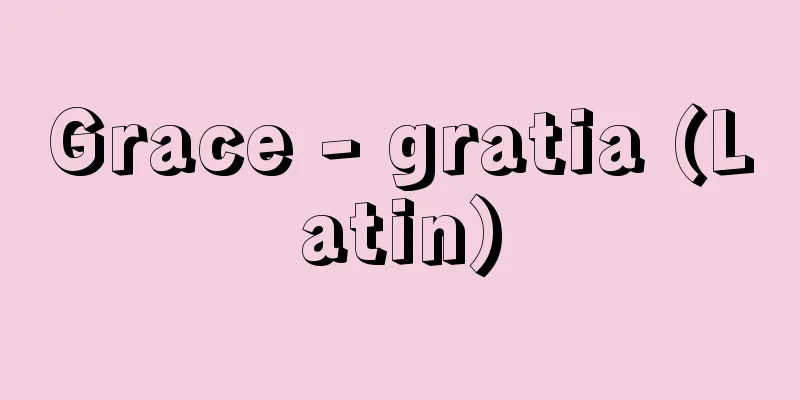Gravel mining industry

|
A branch of the quarrying industry that extracts gravel (river gravel, mountain gravel, land gravel, sea gravel), sorts the grain size, and supplies it to the consumer. From around the mid-Meiji period, gravel began to be used as aggregate for concrete, railroad trackbed, and road construction and paving material, and the gravel mining industry became a viable industry. After the Great Kanto Earthquake and then World War II, concrete began to be used in large quantities, and the demand for gravel as aggregate soared due to the expansion of road paving, the extension of the expressway network and Shinkansen, the spread of concrete buildings, and the increase in concrete products for civil engineering and construction that accompanied the rapid economic growth and motorization. Gravel is generally inexpensive, with most of the price being taken up by transportation costs. For this reason, river gravel that accumulates in rivers close to the demand site is the most easily available supply source, and in fact, river gravel was the majority of the gravel used until the early 1960s (1966 river gravel extraction volume was 197 million tons, accounting for 73.8% of the total gravel). As early as 1956 (Showa 31), the Gravel Mining Law was enacted with the aim of protecting rivers and nurturing gravel miners, many of whom were small and medium-sized businesses. However, as demand for gravel increased, reckless digging caused damage to riverbeds and riverbanks, and cases of adverse effects on levees appeared in many places, so in 1968 the law was completely revised and river gravel mining was restricted from the perspective of preventing environmental destruction. This led to efforts to diversify gravel sources, and by 1979 mountain gravel and land gravel had surpassed the amount of river gravel harvested. In this context, overloading of large dump trucks used to transport gravel has become a social problem, and corrosion of structural steel in concrete caused by the salt contained in sea gravel not being adequately washed away is occurring in many areas. By the way, the production volume in 1983 (Showa 58) was 69 million tons, which was 21% for river gravel, 28% for mountain gravel, 29% for land gravel, and 22% for sea gravel (total 327 million tons), but gravel production has plateaued, and as of 1995 (Heisei 7), river gravel was 38 million tons, which was 10.9%, mountain gravel was 27.6%, land gravel was 37.6%, and sea gravel was 23.9% (total 348 million tons), and land gravel is making up for the decrease in river gravel (tending towards depletion). 31.6% of land gravel is concentrated in Hokkaido, and 41.6% of mountain gravel is concentrated in Chiba Prefecture, and it is essential to thoroughly wash out the mud from both, and the prevention of disasters caused by washed polluted water flowing into rivers and farmland is an issue. Marine gravel accounts for 66% of the total in Nagasaki, Fukuoka, Kagawa, Okayama, and Ehime prefectures, and special care is required to clean the salt off. Over the five years from 1990, more than 30% of gravel mining disasters were caused by polluted water and soil runoff, but in recent years, the responsibility system of the relevant companies in each prefecture has been strengthened, and this is on the decline. The ratio of gravel and crushed rock in aggregate demand and supply has been reversed since 1981, and by 1995 the ratio of gravel to aggregate had fallen to 40.98% of the total aggregate supply of 849 million tons (including steel slag and artificial lightweight aggregate = 0.16%). Nevertheless, gravel is a basic material for Japan's industry and economy, along with steel, cement, wood, non-ferrous metals, etc., and its importance as a core construction material remains great. Modernization of the entire industry, including the development of more advanced sand crushing technology than the current method, must be promoted. [Shinichi Tonomura] Source: Shogakukan Encyclopedia Nipponica About Encyclopedia Nipponica Information | Legend |
|
採石業の一分野で、砂利(河川砂利、山砂利、陸砂利、海砂利)を採取し、粒度などをそろえて需要者側に供給する産業。明治中期ごろから、コンクリートの骨材、鉄道の道床、道路構築・舗装材として砂利が利用されるようになり、砂利採取業が産業として成り立つようになった。関東大震災後、さらには第二次世界大戦後、コンクリートが多量に使用されるようになり、とくに経済の高度成長とモータリゼーションに伴う道路舗装の拡充、高速道路網や新幹線の延長、コンクリート建造物の普及、土木・建築用コンクリート製品の増加が骨材としての砂利需要を急増させた。 砂利は一般に安価なものであり、値段のほとんどが輸送費によって占められる。そのため、需要現場に近い河川に堆積(たいせき)している河川砂利がもっとも入手しやすい供給源であり、事実、1960年代前半までは河川砂利の利用が大半(1966年の河川砂利採取量は1億9700万トンで砂利全体の73.8%)を占めていた。すでに1956年(昭和31)、河川の保全と中小業者の多い砂利採取業者の育成を目的に「砂利採取法」が制定されていたが、砂利の需要増に伴う乱掘が河床・河川敷を荒らし、堤防に悪影響を与える事態が各所に出現したため、68年これが全面改正され、自然破壊防止の観点から河川砂利の採取が制限された。このため砂利供給源の多様化が図られ、79年には山砂利と陸砂利がそれぞれ河川砂利の採取量を凌駕(りょうが)した。こうしたなかで砂利運搬用の大型ダンプカーの過積みが社会問題となり、また、海砂利に含まれる塩分が十分に洗浄されないことから生ずるコンクリートの構造鉄材の腐食問題が各地で発生している。 ちなみに1983年(昭和58)の生産量が、河川砂利6900万トンで21%、山砂利28%、陸砂利29%、海砂利22%(合計3億2700万トン)であったものが、砂利生産量は頭打ちのまま、95年(平成7)現在、河川砂利は3800万トンで10.9%、山砂利27.6%、陸砂利37.6%、海砂利23.9%(合計3億4800万トン)で、河川砂利の減少(枯渇化傾向)を陸砂利が補っている形になっている。陸砂利は31.6%が北海道に、山砂利は41.6%が千葉県に集中しており、両者とも泥分の十分な洗浄が不可欠で、洗浄汚濁水の河川や農地への流入災害防止が課題である。海砂利は長崎、福岡、香川、岡山、愛媛県で66%を占め、塩分の洗浄に特別の注意が要求されている。90年から5年間の砂利採取災害件数の3割強を汚濁水・土砂流出が占めたが、最近では各県関係業者の責任体制が強化され、減少傾向にある。 なお、骨材需給に占める砂利・岩石砕石の割合が逆転するのは1981年からであり、95年には、骨材全体8億4900万トン(鉄鋼スラグ・人工軽量骨材=0.16%を含む)に占める砂利の割合は40.98%まで低下している。とはいえ、砂利は、鉄鋼、セメント、木材、非鉄金属等と並んで、わが国の産業・経済の基礎物質であり、建設資材の中心としての砂利の重要性は依然として大きい。現行方式より進んだ砕砂技術の開発を含む、業界全体の近代化が推進されなければならない。 [殿村晋一] 出典 小学館 日本大百科全書(ニッポニカ)日本大百科全書(ニッポニカ)について 情報 | 凡例 |
>>: Shariki [Village] - Shariki
Recommend
Old Middle Class - Middle Class
…In the past, the term was used to refer to the e...
askerı (English spelling) askeri
...In the case of non-Muslim ethnic groups, the r...
Carnac Stones - Carnac Stones
Stone rows in Carnac, Brittany, France. Three grou...
Cuttack - Cuttack
...The Pala style was introduced to Southeast Asi...
Kumejima Tsumugi
A type of silk fabric. It is plain woven and mostl...
Huntington, G.
...Penicillin may also be given to treat rheumati...
Law of large numbers
A law relating to probability. There are Bernoull...
White cedar
...The cones ripen in the second year, and they c...
Edo Village Kagura
...It can also refer specifically to shrine maide...
Alpine gentian - Alps gentian
...The bitter components are gentiopicrin, erythr...
N,N'-Ethylenebiscobalt(II)
… The common name for N , N′ -ethylenebis(salicyl...
Black marlin
…It is also called Shirokawa. Its English name is...
Zeyer, J.
…In this period, the sharp social critic Karel Ha...
Africanus, SC - Africanus
...His excellent scholarship, rich creativity, an...
Vicarious menstruation
It is periodic bleeding from outside the genitals ...









